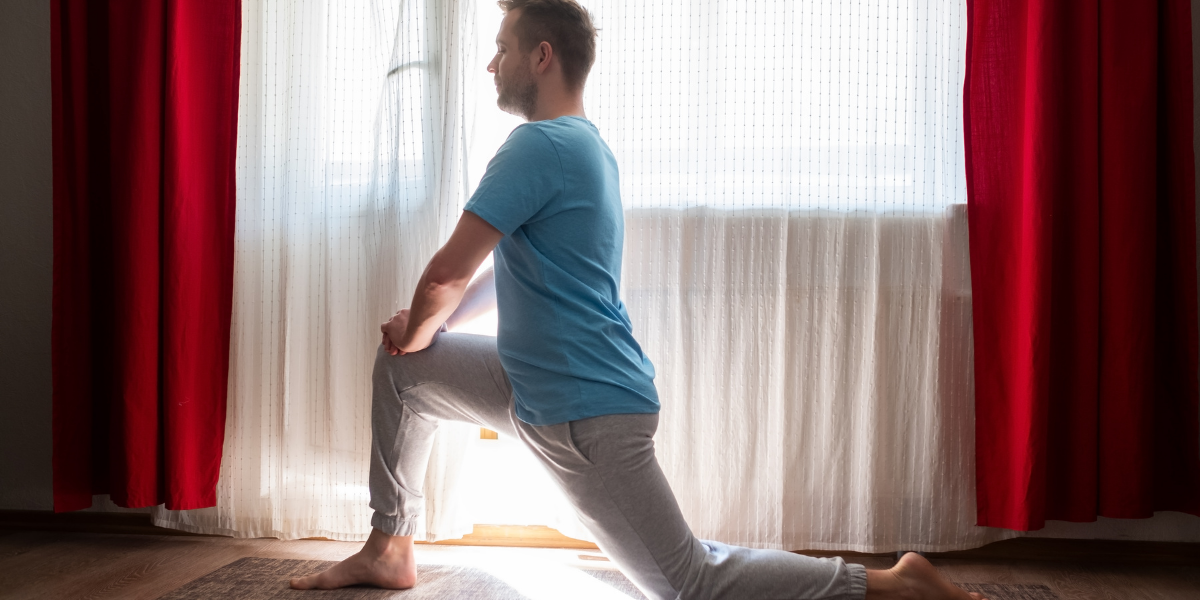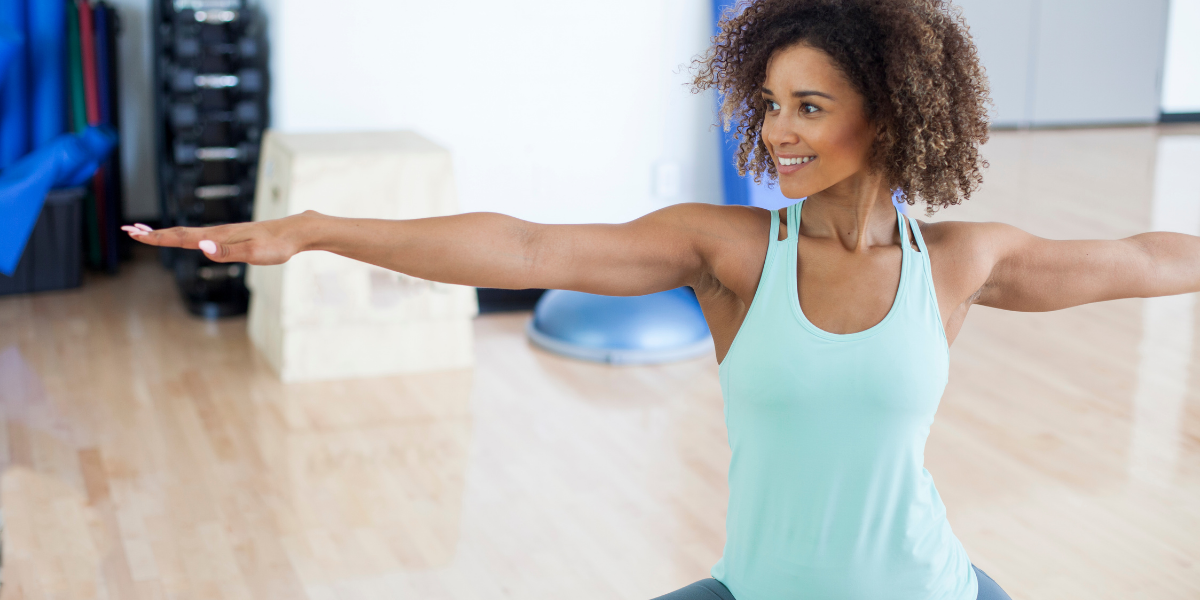
Body balance is one of the most important aspects of holding more advanced yoga poses like Crane Pose and Eagle Pose, but did you know balance is equally as important in fundamental poses like Low Lunge Pose and Warrior II Pose? If you find it difficult to balance, you may not be able to achieve more advanced poses, and this can be frustrating, especially during regular practice. It’s hard to believe, but for most balancing poses, the secret lies in foot placement, especially in lunge poses.
According to Lindsay Pirozzi, a professional yoga expert in New York, many yoga students do not know the proper foot placement, and therefore struggle with simple balancing poses like lunge. In this article, we’ll uncover proper foot placement and how you can work on your balance.

Why is it Difficult to Balance in Lunge Yoga Poses?
According to Pirozzi, it is crucial to keep your feet wide open to hold yourself up in a lunge. If your feet are too close together, like on a tight rope, you may not have the stability to strongly hold yourself up.
When your feet are in line with each other, it becomes more difficult to create a supported, strong base. On the other hand, when your feet are about hip-width distance apart, it can help you solidify your lower body and balance with more stability. This tip is not just for beginners though, and can also help advanced yogis when moving more seamlessly through yoga flows that require quick and fluid movements.
Additionally, many yogis – both beginners and advanced – have a tendency to spread the feet too far apart, over stretching their gait and overestimating their stride. Avoid over stretching by keeping your hips square and your spine neutral in lunge poses, your upper body should not be leaning in any particular direction.
A focus on the breath will also ensure better balance and concentration in lunge poses. Pay special attention to your breath as you move through flows, and move your body with an awareness of placement and alignment, rather than rushing through movements.

How to Maintain Your Balance in Yoga Lunges
Maintaining a strong lunge for an extended period is no simple feat. The benefits of lunges are extensive, building tone and strength in the legs and core, improving posture, opening the hips, increasing spine flexibility and more. But, how can you maintain lunge yoga poses without losing your balance? We’ve got a few tips!
1. Start From the Ground Up
A lunge is a total-body exercise that requires you to tap into your body’s strength, from your toes all the way up to your mind. We recommend starting from the ground up, beginning with strong feet and proper foot placement, supportive legs, a strong and engaged core, active arms, elongated spine and outstretched fingers.
2. Focus on Your Breath
Breathing is an essential part of all yoga poses, and a focus on your breath can help you energize and engage your whole body. If you become nervous during a lunge or feel like you may lose your balance, you should revisit your breath and focus on the inhales and exhales. This air flow will help you refocus and retarget your energy to the most important muscles needed in this position.
3. Set an Intention
Begin each yoga practice by setting a grounding intention. Every time that you feel off balance or weak, return to your intention, repeat it in your mind or out loud, and focus on breathing.
4. Engage Your Arms
Loose muscles in engaged poses like lunge yoga poses are a waste of energy. Focus on tightening your muscles from your shoulders to your fingertips, and keep your gaze past your finger tips.
5. Be Easy on Yourself!
Remember that you are not here to break records, you are here to exercise your mind and body. Be gentle with yourself and do not push yourself too far. Flexibility and strength improves over time, over exerting yourself will simply lead to injury and exhaustion. If you are struggling with lunge yoga poses, there is no shame in utilizing props that will help you ease into the asanas and hold your balance with more stability.

Props for Lunge Yoga Poses
All levels of yogis use props, whether it be to hold your balance in a certain pose, or to dig a little deeper in a lunge to intensify the pose.
If you are in need of help balancing in a lunge yoga pose, place blocks on either side of your hips on their tallest setting (so they are upright). Assume lunge position, and whenever you feel a wobble coming on, place your hands on the blocks for added support. You do not have to press hard, but use them for slight support to reach your equilibrium again.
You can use a block to deepen a lunge pose simply by placing a block under your back knee. Begin in a lunge position, with your left foot in the back, slightly raised off the floor. Turn a block to its lowest point, so it is not standing up tall, and place it under your back knee. Slowly lower your left knee to rest on the block. Slowly bring your hands up onto your front thigh and lift your torso up. You will experience the most juicy stretch throughout the front of your back leg. When you’re ready to come out of the pose, release your back foot and remove the block.
Don’t have yoga blocks at home? It’s time to add them to your at-home yoga toolkit. We recommend using the Tranquil Yogi Illume Yoga Block. The cork material is non-slip and helps you to feel completely secure and stable in balancing poses unlike other foam blocks. Better yet – it’s lightweight and easy to move and position in more difficult postures.


